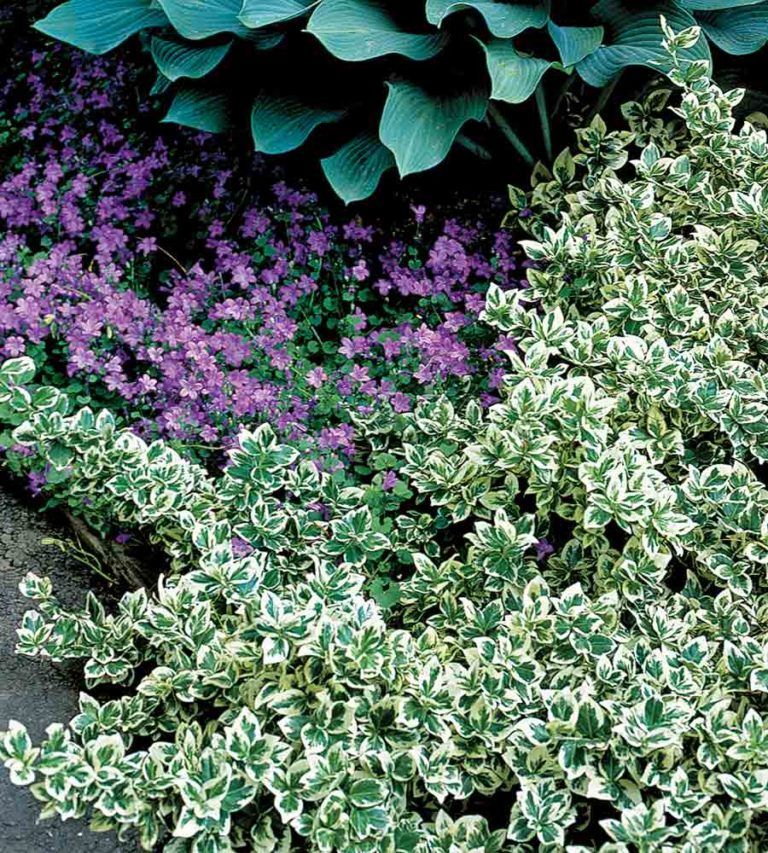Table of Contents
Everyone is busy with the hustles and bustles, grinding themselves for a better career and life. Hence, you may need to add some low-maintenance shrubs to your garden to increase the beauty of your garden, even when you are busy. Therefore, as a gardener, you want to plant more shrubs for its benefit. Shrubs offer beautiful and natural forms that are pest resistant and can tolerate different growing conditions. You can also grow shrubs as privacy hedges because of their sturdy nature.
In this inclusive guide, you will explore in-depth details about low-maintenance shrubs, including their characteristics, types, uses, and function.
You will also be able to analyse about 22 garden plants that can elevate the beauty of your landscape, including how to grow and care for them.
What is a Low-Maintenance Garden Shrub?
Garden shrubs are thick plants that are woody in texture and are fundamentally smaller in size. These plants branch out in various stems or trunks and are called bushes. Shrubs are moderately low maintenance and easy to recognise. Hence, to identify them, look at the short and bushy characteristics of the plant.
Moreover, these plants lack trunks, and a large part of them, around the stem, isn’t visible, which adds up to their dense character. Therefore, many new gardeners and experts like to use shrubs for decoration. Hence, many hotel businesses use shrubs to develop a beautiful landscape to lure customers.
Shrubs offer evergreen nature and colourful blooms. However, they require little care, but ensure to water them well until they establish in their new environment. Most shrubs are dense and short, whereas others are thin and slightly tall in characteristics. Some shrubs may have flowers, while others may possess green leaves.
Shrubs usually grow up to 10 feet or 3 metres in height, regardless of whether they have flowers or are ornamental. Their specifications are to make the landscape beautiful and serve the purpose of fences, barricades, background paintings, screens, or professional gatherings.
Low-Maintenance Shrubs that You Can Plant in Your Garden
Once you have decided to grow a low-maintenance shrub, it is essential to plough the shrubs at the right time. For the first two years, you need to keep watering so that they build a strong root system. Going for low-maintenance gardening allows you to enjoy your hobbies effortlessly, even when busy with your life. In this comprehensive guide, you can explore a curated list of twenty-two plants to grow in your yard.
1. Nandina Domestica
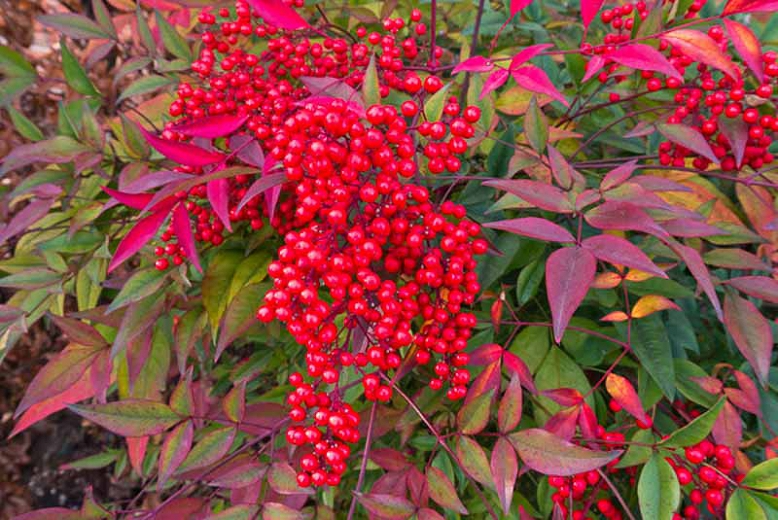
Nandina domestica is also known as heavenly bamboo, and they are good if you have the smallest space and can indulge in fall colour in your landscape. These small size plants are known for their evergreen and beautiful flame colour leaves. Moreover, they are low-maintenance shrubs requiring no pruning. They have a high level of drought tolerance.
2. Lavender
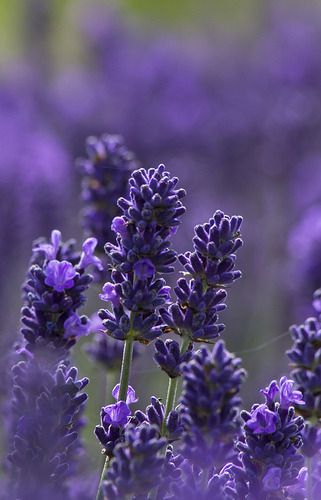
Lavender possesses a beautiful colour, scent, texture, and structure in purple flowers. These shops need sunny weather and good condition to grow. However, like Nandina, domestica and lavender also needs pruning. And they require more attention than trimming at the end of summer and spring. They are drought resistant and very versatile to grow in your home garden.
3. Weigela
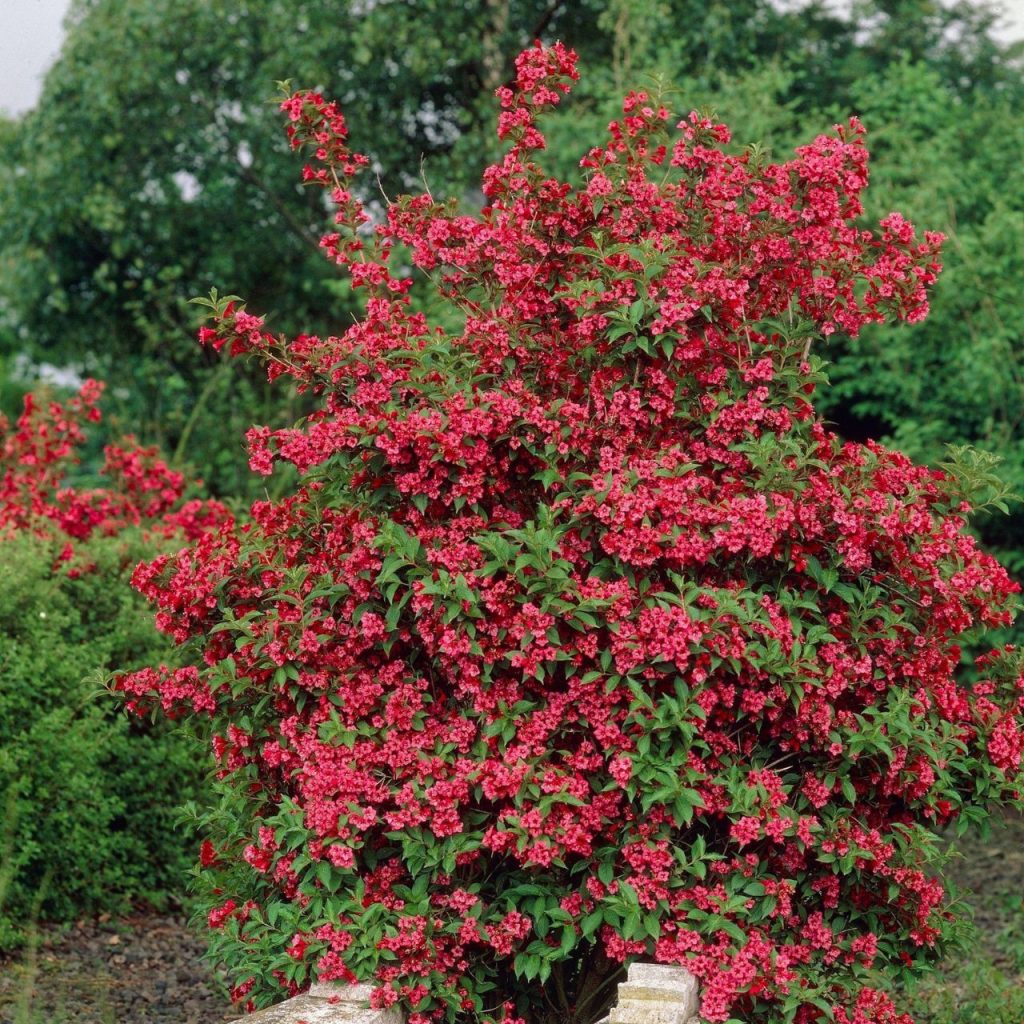
When it comes to boosting summer flower beds, weigela is a great option to plant in the long flowering season. These shrubs provide a welcoming structure and colour that attracts butterflies and hummingbirds. Weigela offers many variants of flowers ranging from white to pink or red. These plants thrive in full sun and grow abundantly. However, they don’t do well in windy areas.
4. Berberis Darwinii
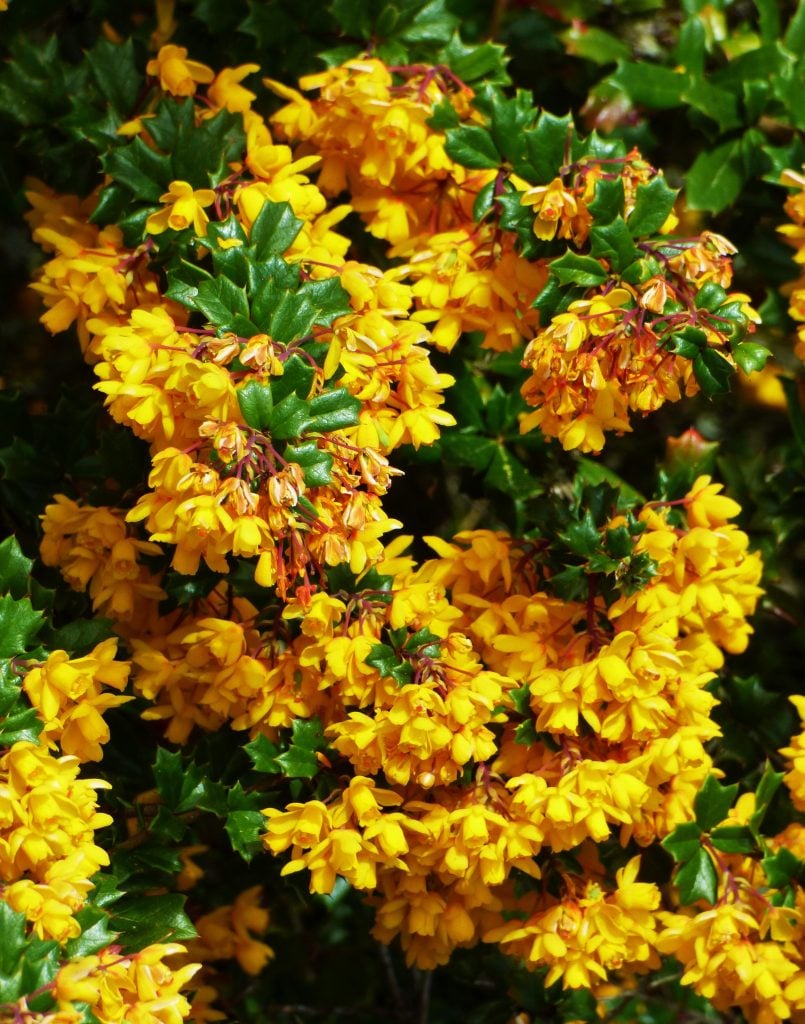
If you are looking to elevate your garden’s look with some golden sunshine yellow, then growing Berberis Darwinii is the best option. These shrubs are as hardworking as an evergreen and can perfectly work as a privacy shrub in your garden. The growth rate of these plants is slow. Hence, they won’t outgrow their location easily. Moreover, these plants offer vibrant colours adding a splash in late autumn and winter.
5. Vernal Witch Hazel
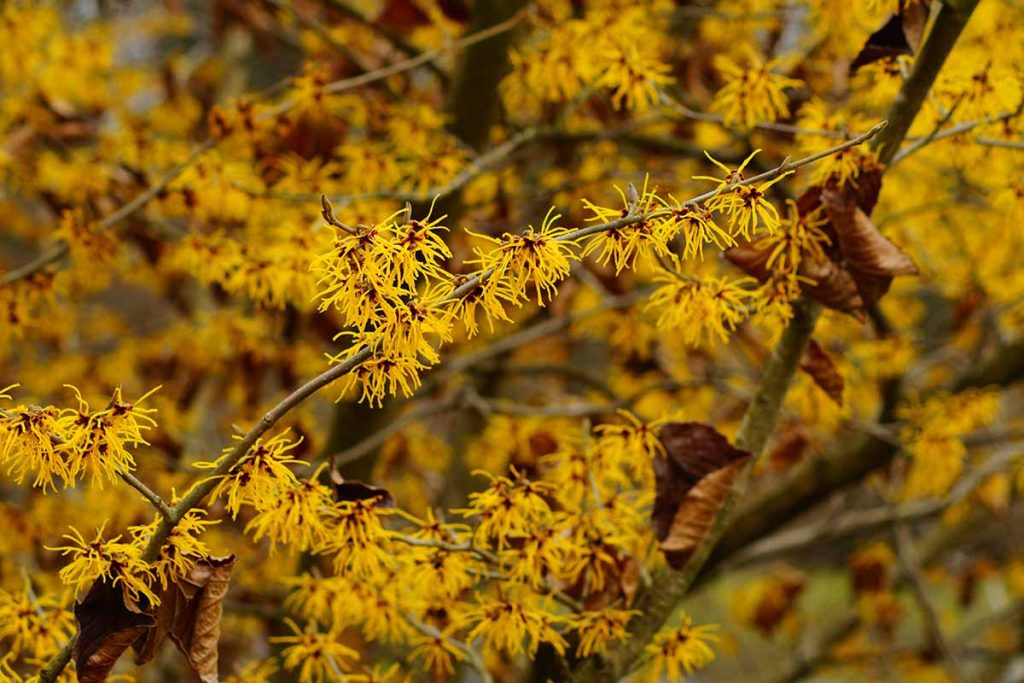
Witch hazels offer different species and hybrids at various times of the year. These plants are cool and are low-maintenance shrubs. Therefore, they stand out because of their beautiful spicy scent and thread-like petals on their branch. These hazels grow 6 to 10 feet tall in -30° F temperatures. One of the most common species of these shrubs is Hamamelis vernalis which blooms in the autumn.
6. Boxwood
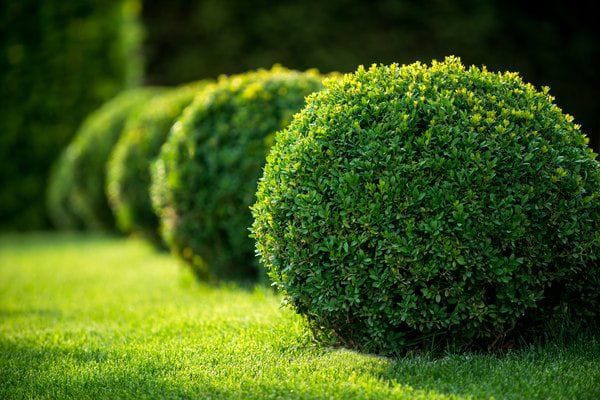
Boxwood is one of the most significant green shrubs with glossy leaves that is low maintenance. There are two types of boxwood plants that you can plant in your garden. One option is Winter Gem which is long and grows up to 6 ft-8 ft. However, they are slow growing, and you can easily prune the shrub to keep it in shape. The other option is Franklin’s Gem Boxwood which is shorter in stature than Winter gems, and you can plant them on the entrance or in front of the big plants to maintain the aesthetic looks of your garden.
7. Rhododendron
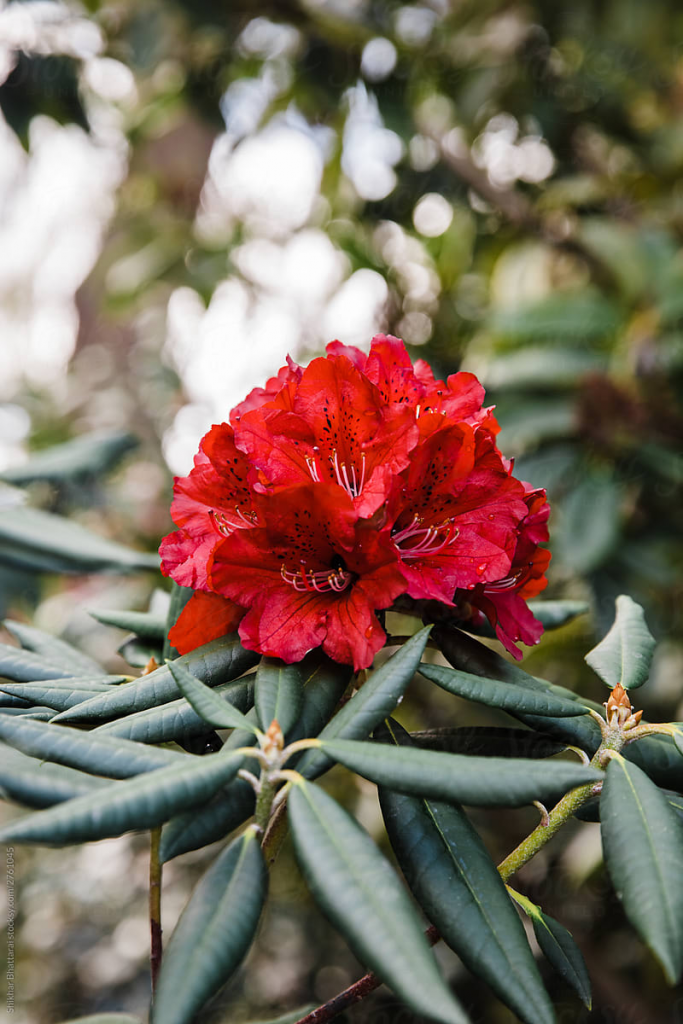
These shrubs are the type of shrub with big leaves that will be evergreen all year round. Many gardeners grow the perennial shrub “Rhododendron” as a privacy hedge. These woody plants are the relatives of Azalea, and similarly, it is also low maintenance as them. Rhododendron prefers partial shade to grow with some protection against wind. The blossoms are mostly red, pink, orange, white, or purple that bloom in spring.
8. Rose

Rose is the symbol of beauty and expressing love, and that’s why it is one of the most popular shrubs in the category. Roses are beloved, and many hybrid colours are available, like white, pink, black, blue, lavender, yellow, and orange, with single or double blooms. These plants and flowers are fragrant while the plant grows up to 3-5 feet and spreads up to 3 feet wide. Although these plants are easy to grow, pruning can be tough because of their thorns.
9. Juniper
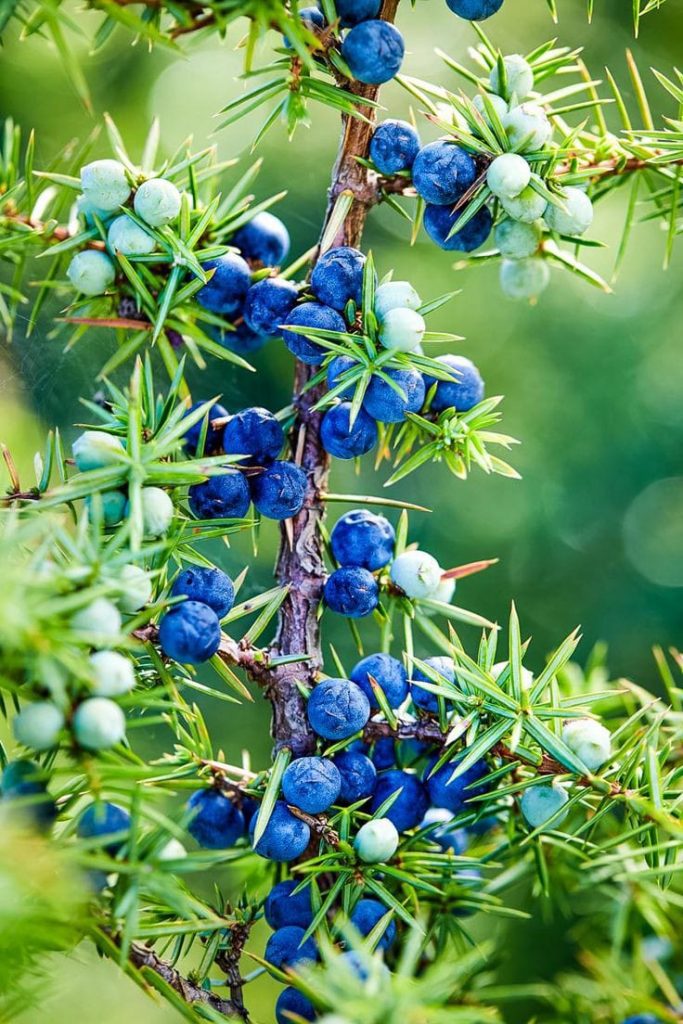
If you are more into growing evergreen trees, then Juniper is one the most suitable plant for you as its low maintenance that thrives in full sun. There are many varieties that you can grow in your garden, such as Blue Star, California Juniper, and many more. They grow to 6 feet in height while spreading up to 4 feet. These plants are low-maintenance shrubs that can grow in almost any soil. Moreover, they are drought resistant; hence, you can grow them to enhance the landscape.
10. Euonymus
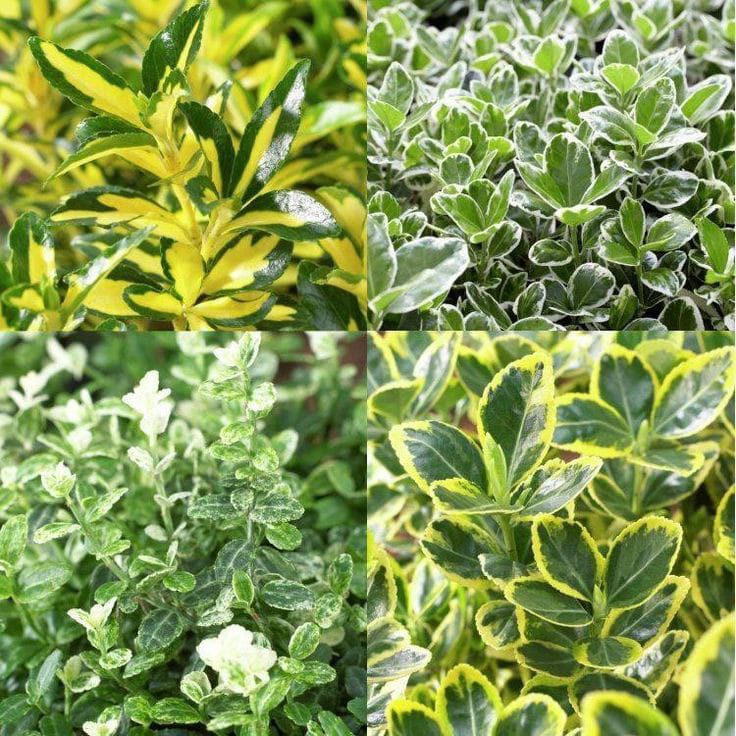
While looking for shrubs that grow in the shade, you may come across Euonymus. These plants are low-maintenance shrubs that can grow up to 15 feet tall and have more than 175 species to grow in your garden. One of the most famous low-maintenance shrubs is burning bush, as the plant has fiery red foliage, which makes them the first choice for the yard.
11. Inkberry
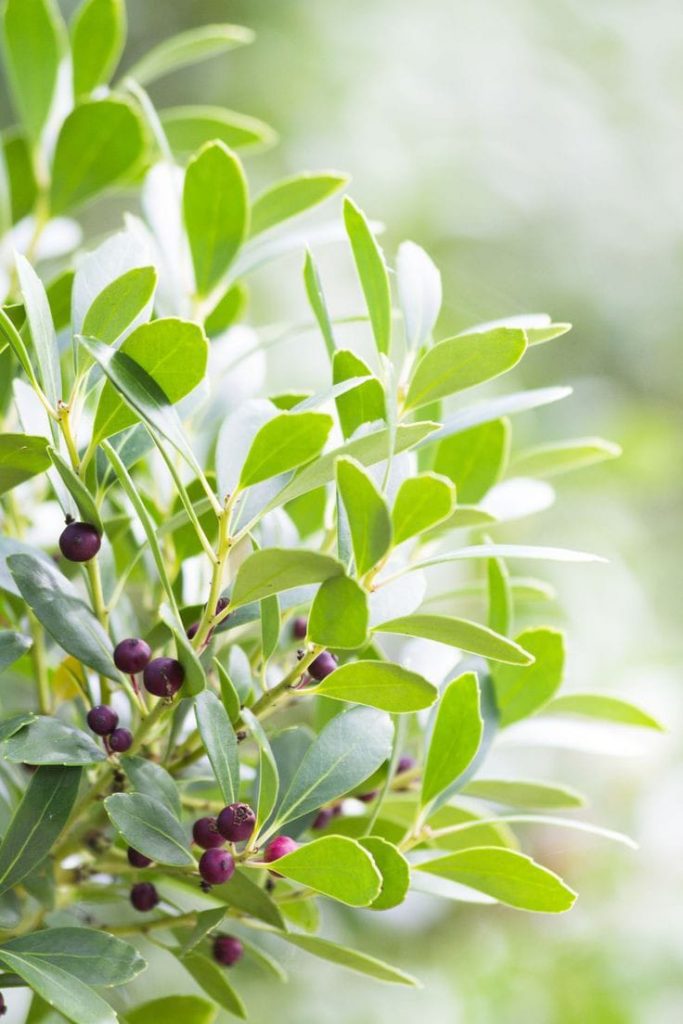
Inkberry is a slow-growing plant that you can grow in your garden because of its dark green foliage and long-lasting flower that the birds favour because of its dark blue berries. These low-maintenance shrubs can grow up to 3-4 feet which you can mound in formal gardens and landscapes. You can also grow them in containers in partial sun before moving them into your home garden.
12. Azalea
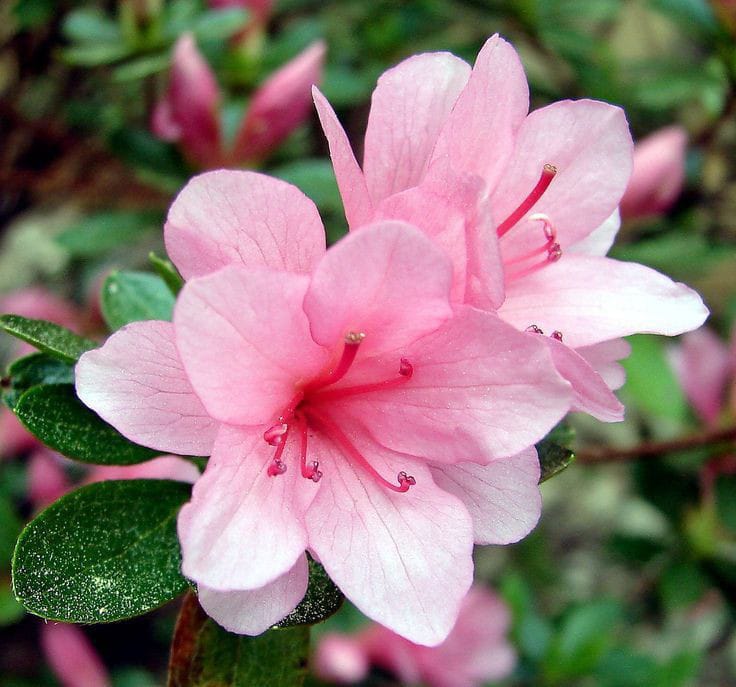
These low-maintenance shrubs are also known as cousin shrubs of Rhododendrons. The features of Azaleas are that these plants have dark, dense foliage with a vibrant splash of colourful flowers crowned over the top of the stem. The plants offer wide varieties of colours like white, red, purple, yellow, pink or orange. These low-maintenance shrubs prefer to thrive in partial or full sun, moist and rich soil with a proper drainage system. Most Azaleas grow to 3 to 6 ft tall, but you can prune them to optimise their size, shape, or structure.
13. Hydrangea
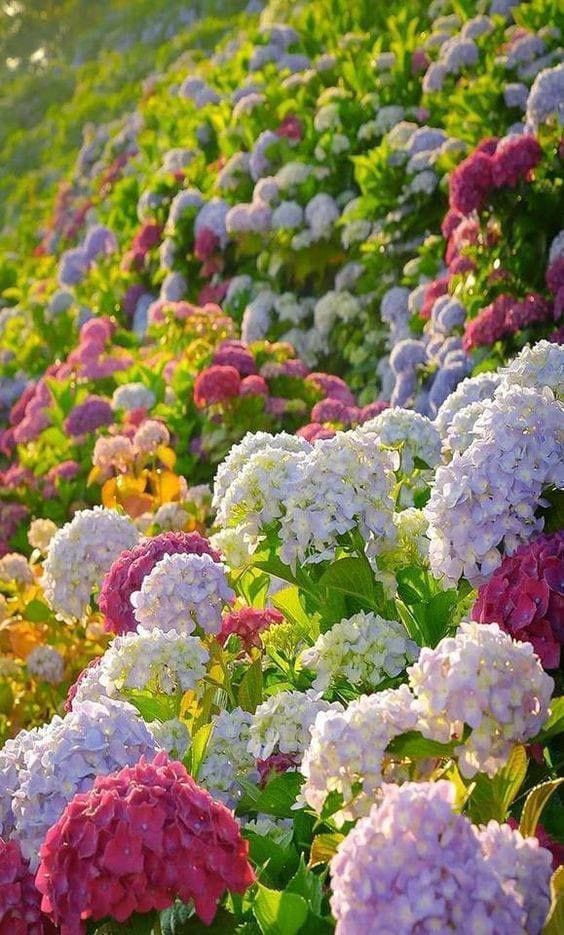
If you want your garden to have a showy splash into it, then growing these low-maintenance shrubs is the best choice to make for your garden. These plants offer many colours, such as white, pink, purple, or blue, depending on the ph level of the soil. These shrubs grow up to 3 to 5 feet tall and prefer to thrive well in dappled light, morning sun or partial shade.
14. Yew
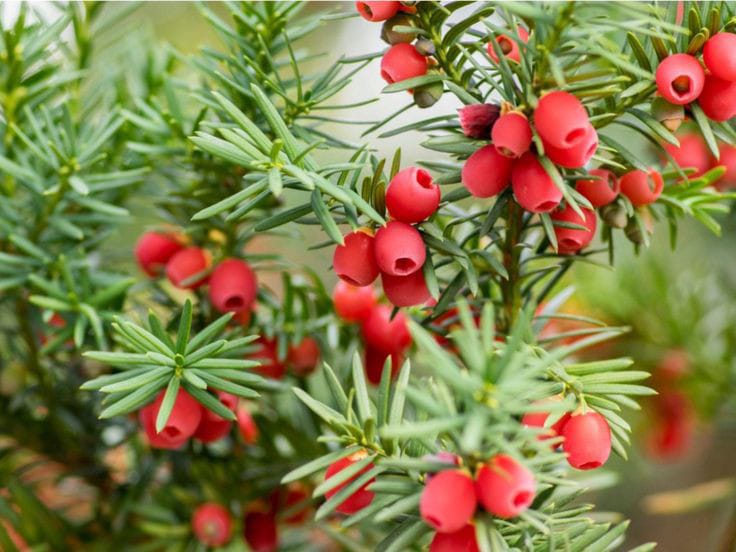
Yew is a plant that you can take as a slow-growing low-maintenance shrub that you can grow in your garden. These plants look like soft needles and are evergreen in nature. They have dense foliage, and they can grow up to 20 feet. Hence, they hold popularity as privacy hedges. However, yew also comes in some dwarf varieties if you are looking for them to plant in your garden.
15. Holly

This low-maintenance shrub is a favourite holiday plant of many gardeners, with its evergreen nature, glossy green notched leaves, and red berries that attracts many birds. Furthermore, these plants can grow up to 30 feet in height which makes them good options for privacy hedges, while some of the Holly remains to be low growing. These shrubs are low maintenance, can handle a variety of soil, and can be drought resistant upon maturing.
16. Forsythia
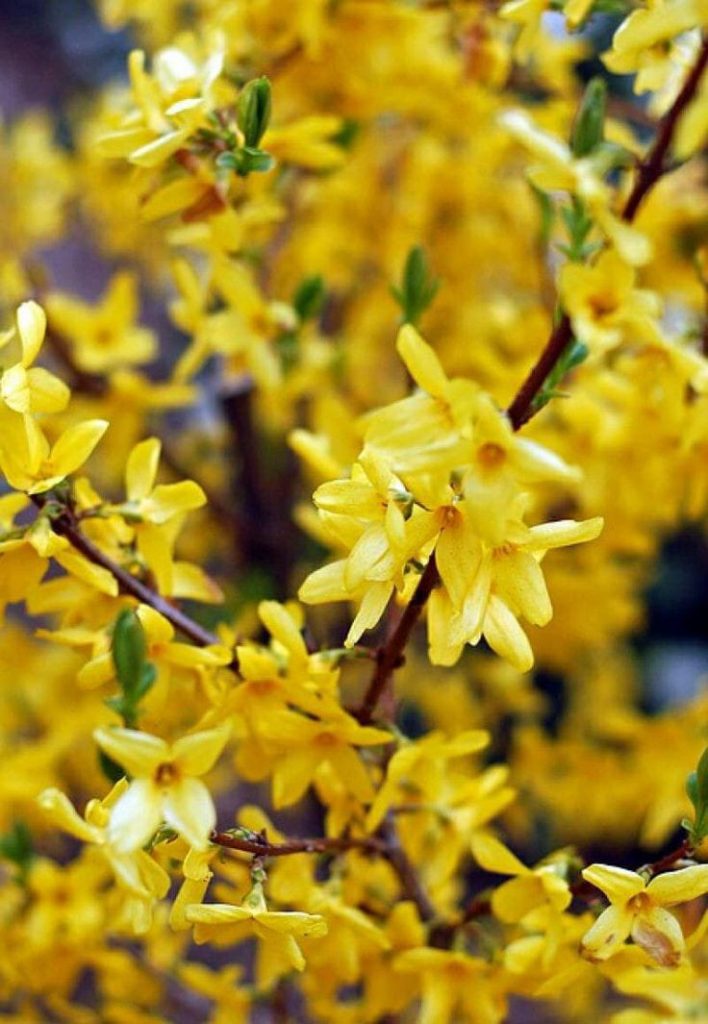
If you are into some bold and vibrant colour shrubs, Forsythia is one of the most proper choices. These low-maintenance shrubs are bold yellow in colour, which looks like sunshine. These deciduous shrubs can grow up to 10 feet in height and width, but you can prune them for a better and more formal look for your garden.
17. Spirea
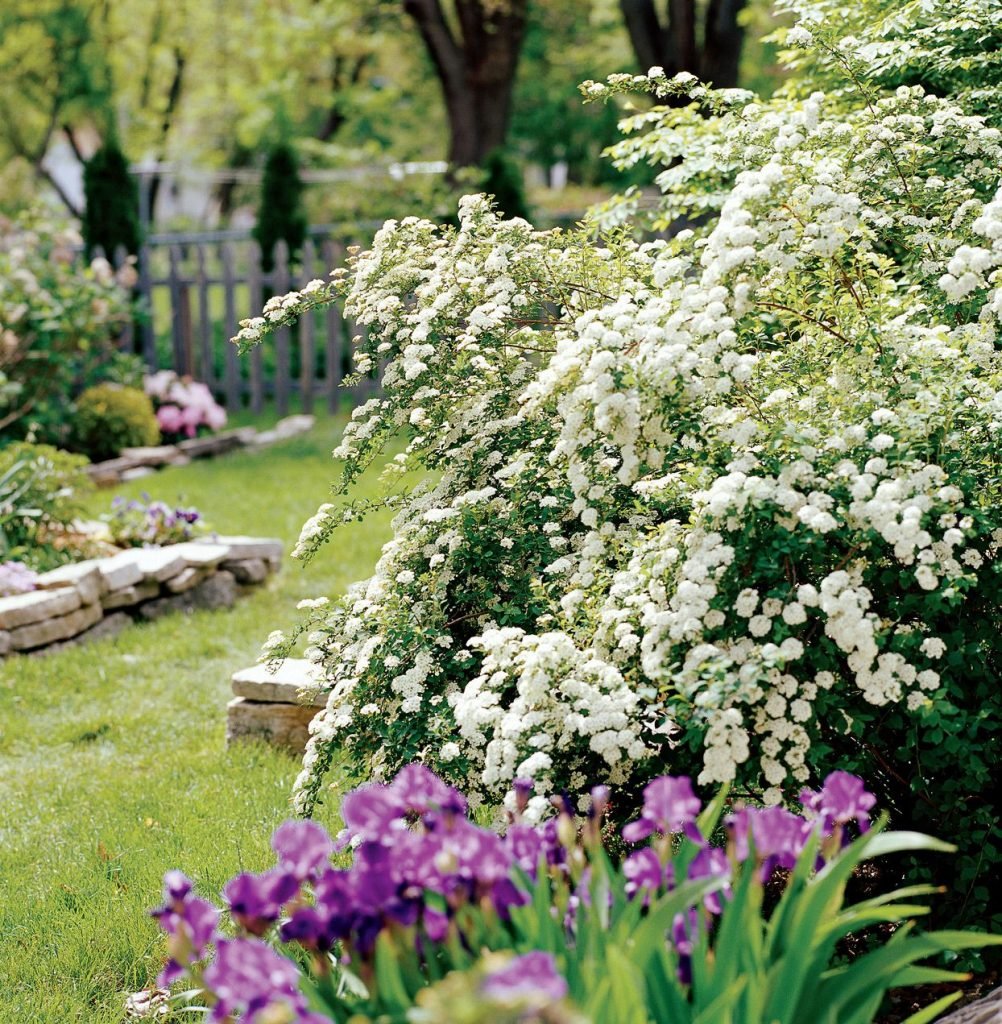
Spirea is one of the most popular and easiest plants to grow in your garden. These shrubs can grow fast, and most gardeners plant these low-maintenance green as hedges or groupings. Varieties like bridal wreath spirea produce sweet-smelling white loose flowers which you can plant in your garden to enhance the landscape’s beauty.
18. Dwarf Korean Lilac
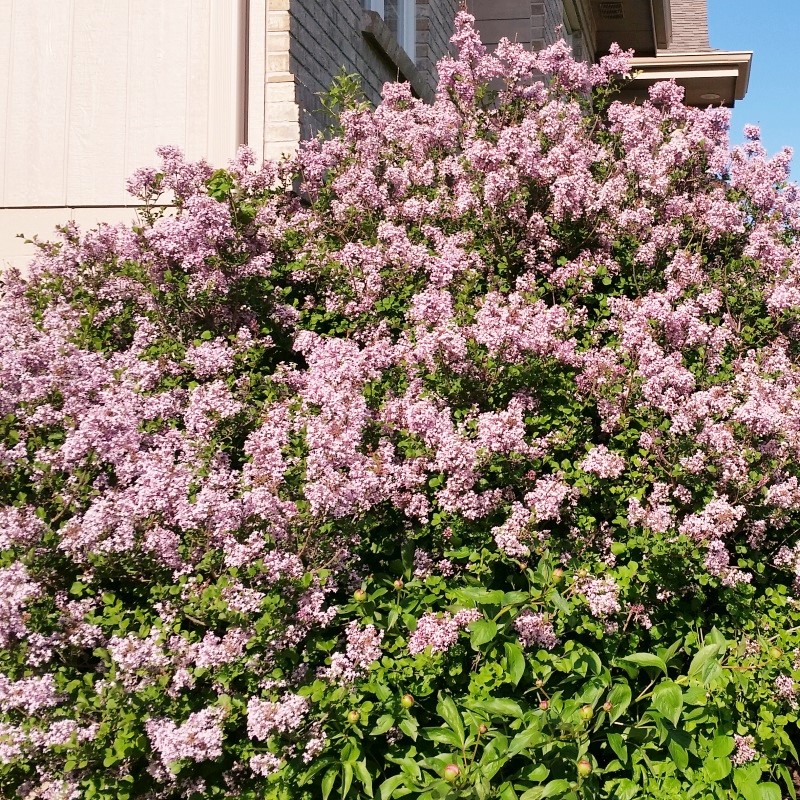
It’s a deciduous shrub that you can grow easily in your garden with a little care. As these plants are named dwarfs, you can guess they are small in stature. These plants grow to 4-5 feet in height and spread to 5-7 feet in width. Korean lilacs mostly grow in April, May and June, which grows in purple or pink clusters. The flowers are fragrant and sweet. Hence, it attracts hummingbirds and butterflies.
19. SmokeBush
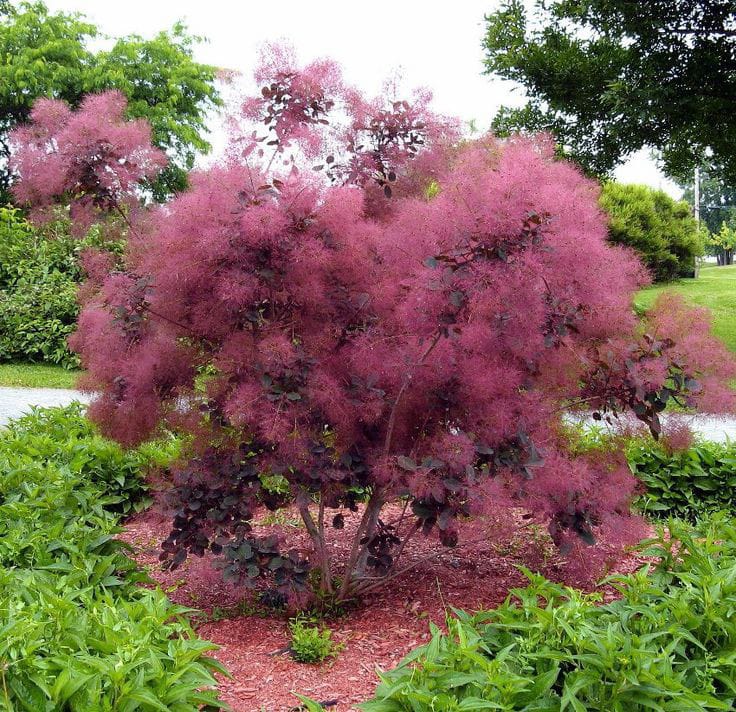
Smokebush is a deciduous plant that is a distinctive shrub that you can grow in your garden. These shrubs grow around 10-15 feet in height, the same width that blooms through May and July, with fluffy yellow flowers hanging around its stem. The plant SmokeBush got its name from the appearance of the shrub; the flowers look like smoke clustered upon the stem. These low-maintenance shrubs prefer to grow in partial sun and look amazing if you care properly for them.
20. Virginia Sweetspire
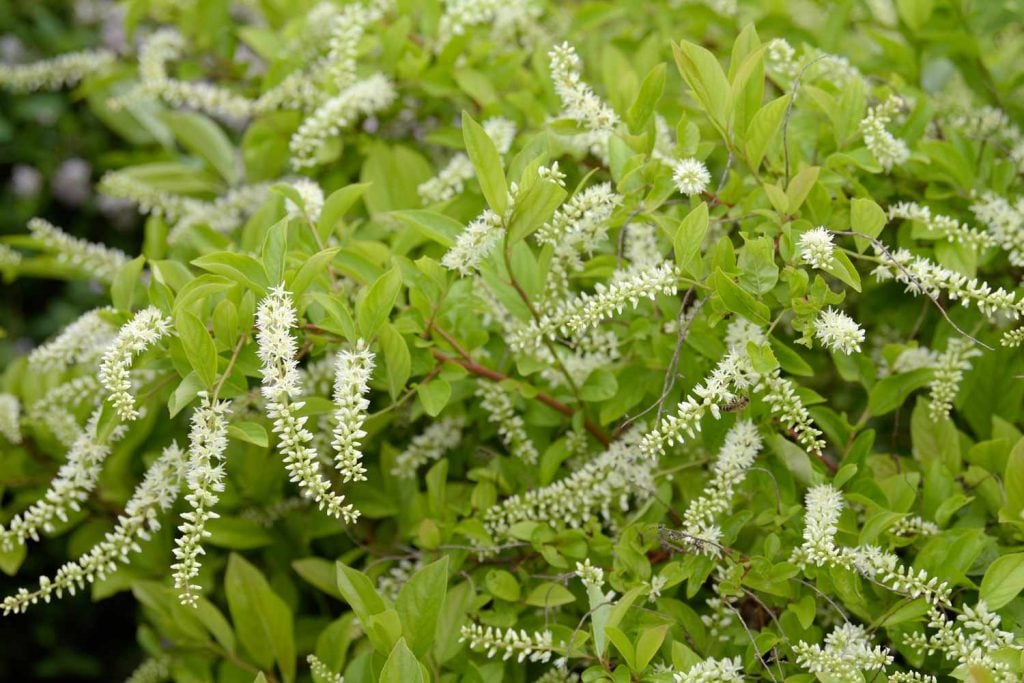
You can grow this stellar deciduous shrub in your garden to attract natural beauty. Virginia Sweetspire is a low-maintenance shrub that grows up to 3-5 feet in height and width evenly; the plant blooms from May to June. These plants prefer to grow in full to partial sunlight. You can plant these shrubs to enhance the beauty of your garden.
21. Japanese Spirea
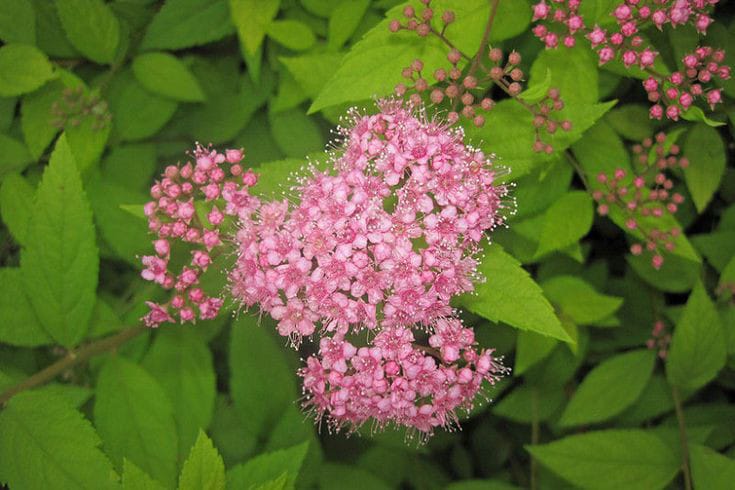
Spirea is a low-maintenance shrub that grows up to 4-6 feet in height and a width of 5-7. The blossoms bloom from June to July and thrive in full sun. They are easy to maintain, and you can prune them to enhance their shape, size, and structure. Some of the varieties that you can grow in your garden are Golden elf, candy corn, gold flame, and many more. These shrubs have attractive blooms that attract pollinators like butterflies, bees, and many more.
22. Oakleaf Hydrangea
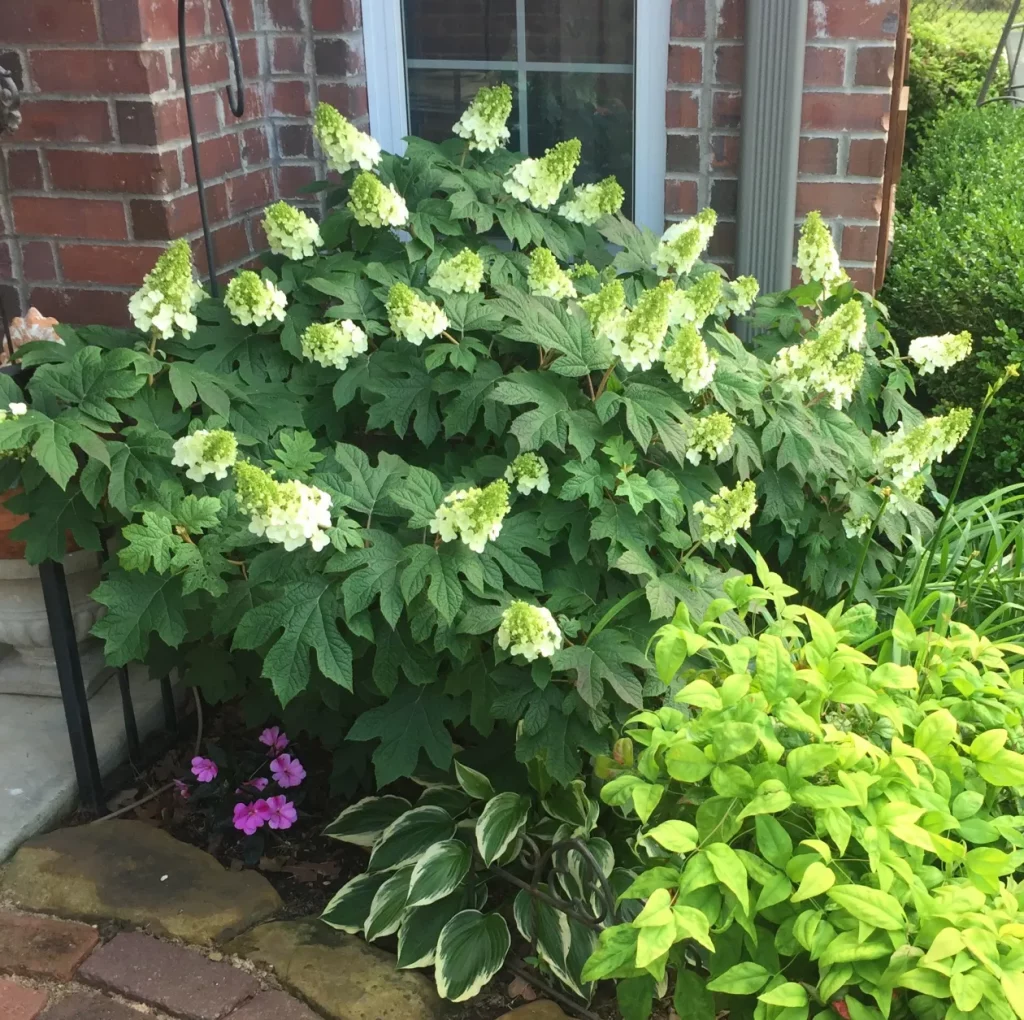
Oakleaf Hydrangea is one of the most easy-care plants to grow in your landscape. These shrubs tend to have a natural, informal look, which makes them attractive. These plants grow up to 6-8 feet in height while spreading equally. These plants thrive well in full shade and prefer moist soil.
Characteristics and Function of Low-Maintenance Shrubs
Characteristics
As you may know, shrubs are known for their best features. These notable features har mentioned in the blog.
- One of the characteristics is that they don’t have a trunk, instead have a lot of stems. The branches originate right from the base of the plant.
- Compared to trees, shrubs are mostly smaller as they grow up to 3 m in height. They do not have a single song to support the weight and pressure of the shrub.
- These low-maintenance shrubs have broad leaves that can grow in various soil types.
- These plants grow better in sunny environments as compared to other seasons.
Functions
Shrubs play many vital roles in the environment. Hence, in this comprehensive guide, you can explore the functions of the shrubs.
- One of the most vital functions of shrubs is their effectiveness in beautifying the landscape.
- These plants are a significant source of fuelwood.
- Shrubs are grown in the garden bed to beautify the background.
- Shrubs do a lot for the ecosystem by sheltering small insects.
- Shrubs also help with environmental conservation by preventing water wastage and soil erosion and help in restoring the greens.
- You can use many parts of shrubs for various purposes, including getting fruits, using roots and leaves.
Types and Uses of Garden Shrubs
There are different types of shrubs that you can commonly find as a gardener. They can be for the group based on foliage, seasons or colour. In the blog, you will explore the types and uses of garden shrubs.
1. Broadleaf Evergreen Shrubs
As the name states, these are evergreen shrubs that like to remain green throughout the year despite the time or season you plant them. However, when it comes to appearance, you shall observe the colour variants to recognise the type. Some common examples are camellia, boxwood, Holly, Laurel, gardenia and many more.
2. Needled Evergreen Shrubs
These plants got the name needled evergreen shrubs because of their needle-like structure. Despite whether the leaves are broad or narrow, the end resembles a needle. Disturbs do not possess a trunk and stems start right from the base. For instance, Juniper, yew, mugo pine, and many more have some common examples of needled evergreens.
3. Deciduous Shrubs
A deciduous plant is a shrub that sheds its leaves in a particular season, depending on the place and weather conditions. Hence, this occurs at different times of the year regarding where you are. Therefore, many prominent factors matter associated with shedding on deciduous trees. The shrubs mainly discard their leaves in autumn and winter, and you notice a change in the colour of their foliage.
However, when spring comes, these low-maintenance shrubs retain their original colour and grow new leaves until autumn comes again. Some common examples of shrubs include Russian sage, lilac, honeysuckle and many more.
How to Plant and Care for Your Shrubs
If you want to exaggerate the beauty of the landscape, there’s no way better than adding a few shrubs. Therefore, with these popular varieties, you can add a splash of green to your garden. Hence, in this article, you can explore ways to plant and care for your shrubs, elevating the beauty of your landscape.
Planting the Shrubs
Before you start growing your shrubs, you need to understand the purpose that your greenery serves in the garden. It is vital to point out that any shrub you grow in your yard fits and proposes the motive you want. Therefore, before planting the plant, look out at the climate conditions in your place and plant your shrubs in the aesthetic area of your garden.
- Before you plant the shrub, choose the site. Pick your shrub according to the area’s climate and plant in spots where they meet the light. Moreover, if you seed a sun shrub in a shaded area, the plant can’t thrive much.
- You need to do your research before planting your shrubs. You can either search online or look for inspiration in your neighbourhood.
- For planting a shrub, the traditional method states to dig a hole twice as deep and wide as the root. However, experts now believe that harrowing as deep is not up-to-date. Hence, you only need to plough the hole as wide as twice the root ball and follow up with fertiliser.
- Before you dig for your plants, water them thoroughly in the pots. And fill them with native soil on the top. Add a few scoops of compost and organic matter to grow your shrubs.
- Once you plant your low-maintenance shrubs, water the plant thoroughly till they establish the roots. And then control water consumption afterwards.
Caring for The Shrubs
Ensure to know that every shrub is distinct and needs independent care. You need to research properly to know about feeding needs and watering. In this article, you will explore the caring needs of your shrub.
- To care for your plant, install a drip irrigation system, to water the root and prevent overwatering.
- Add fertiliser to your plant accordingly in its growing period. However, don’t immediately fertilise after you plant your shrubs. Mulch your plant with organic matter and compost to improve the soil.
- Always look for the pest before you plant your shrubs, including that test your soil.
- It is essential to tie the branches of the shrubs as they are weak at the beginning, and it’s hard to keep them straight.
Conclusion
Low-maintenance shrubs look beautiful in your garden and are a magnificent background in the landscape. Therefore, if you are a gardener or a homeowner, this guide can help you to explore fundamental knowledge to grow shrubs. Hence, to grow shrubs in your garden, care for them properly.
In this guide, you can explore the low-maintenance shrubs you plant in your landscape. Shrub serves the purpose of more than just beautifying the landscape as background, fences and many more. Therefore, use this guide and make use of it to create a beautiful experience or landscape for your home to enhance beauty.

